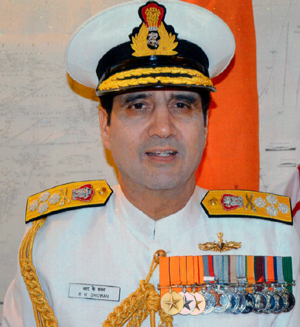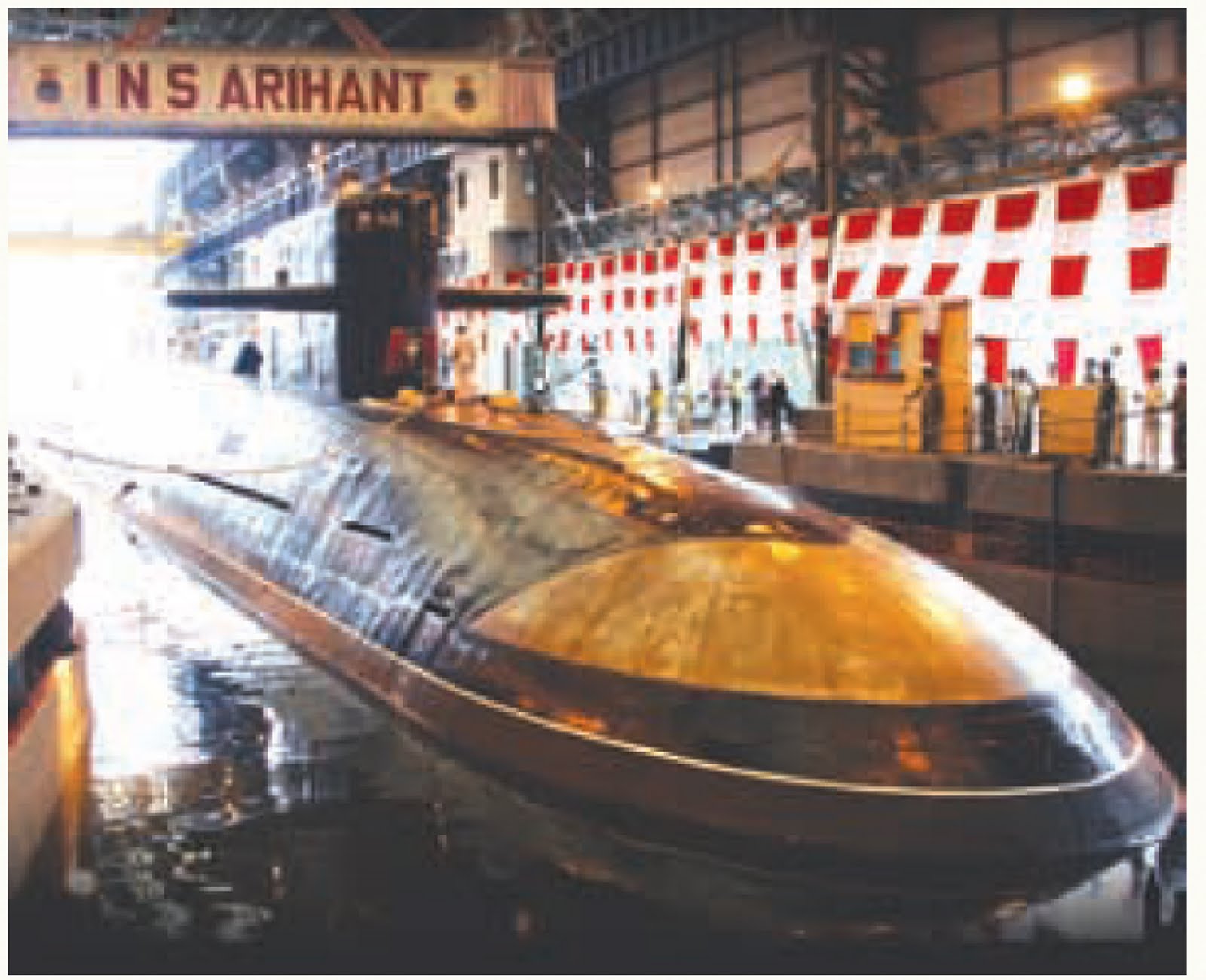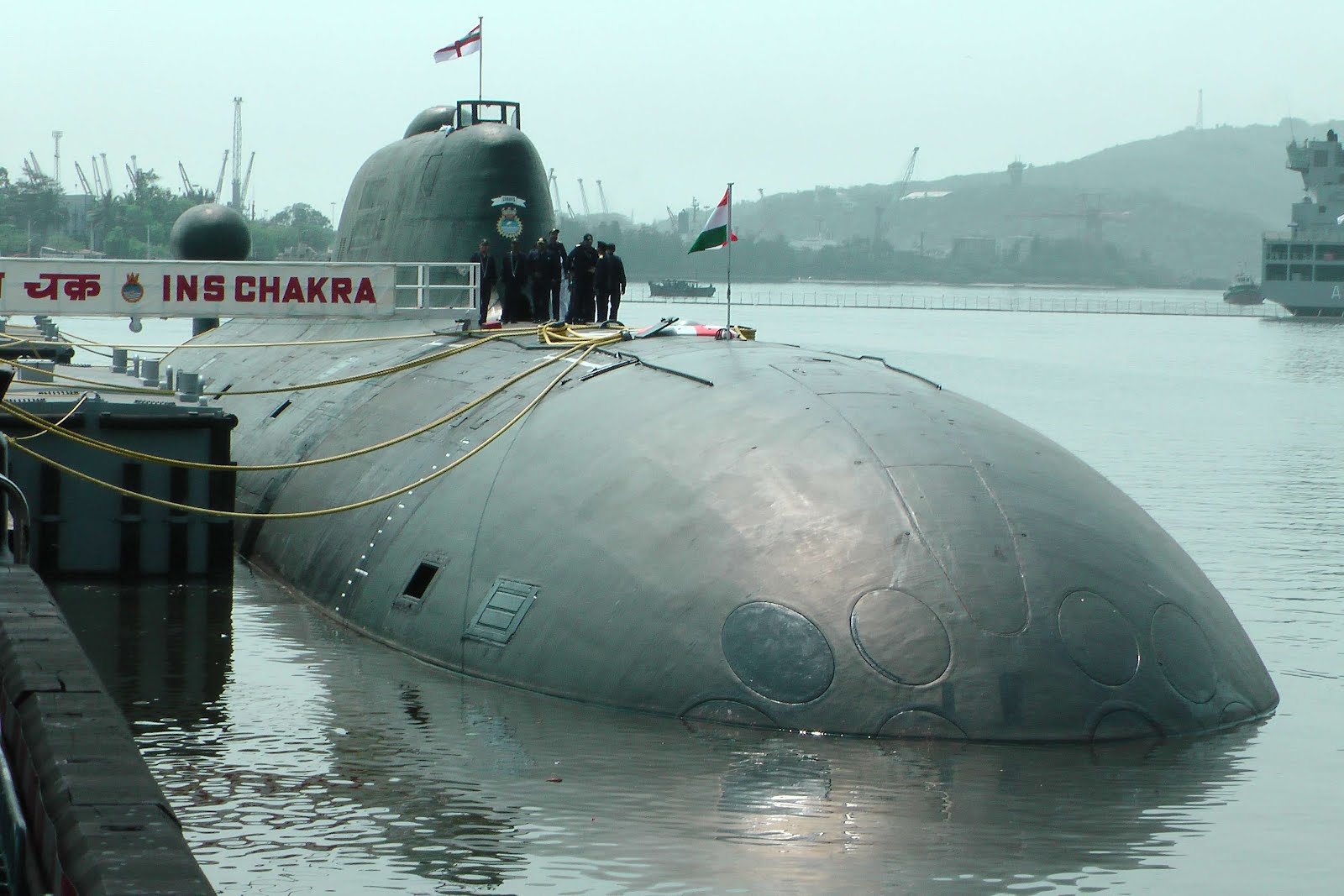|
The propitious words
quoted above on the importance of maritime power by former Chief of the Naval Staff (CNS) Admiral DK Joshi were
highlighted during the Navy Day celebrations in December, 2012. India’s fast expanding Navy was being toasted
as one of the leading Navies in the East, which it is, but was marred by a spate of ship accidents, collisions
and groundings and two severe submarine accidents.
The first submarine accident took place when the Club firing Kilo class submarine INS Sindhurakshak, recently
refitted in Russia, exploded and sank on the night of August 13/14, 2013 in the Naval Dockyard at Mumbai. This
happened with the loss of eighteen personnel including five officers who were mainly Torpedo and Anti Submarine
(TAS) crew. It happened just a day before India’s Independence Day and cast a pall of gloom. A weapon seems to
have taken off accidently, as the ‘sub’ was being readied for a ‘War Patrol’, that a worked up submarine undertakes
to simulate war like conditions with all weapons loaded once in every commission. It shook the Navy and the results
of the Inquiry will be known when the US salvage firm Resolve Marine Group USA which has been contracted for around
Rs 240 crore ($40 million) in March to bring the wreck up, executes its contract with its Indian subsidiary, currently
working on the task at Mumbai. A two month period is estimated for the salvage.
Then, on February 26, 2014 the twenty six year old Kilo submarine INS Sindhuratnna while was dived and was being
inspected by the Commodore Submarines (COMSUB West) after a short refit in Naval Dockyard, suffered a fire in the
Sailors Mess Decks just above the battery compartment through which the main large power delivery cables run. The
two electrical officer who heroically fought the fire Lt. Commanders Kapish Muwal and Manoranjan Kumar were killed.
The submarine was possibly drawing full power from the batteries, and the cable is suspected of overheating and could
have caused the fire, which raged and the Captain of the boat and seven sailors tried to fight but were overcome and
flown to INHS Ashvini. The Navy’s submarine unblemished safety record was broken and the cumulative reporting of
accidents in the media somewhat tarnished the Navy’s image, and its fine operational record.
Immediately, that day, CNS Admiral DK Joshi abruptly resigned, citing ‘Moral Responsibility’ for the series of accidents.
It came as a surprise to most observers. Admiral DK Joshi felt he was being upbraided in public by some quarters in the
Ministry of Defence (MOD), who appeared oblivious to the challenges the Navy was facing, which was maintaining its full
operational profile, under pressure of shortages of submarines, helicopters and infrastructure.
Succession to the post of the Chief of Armed Forces in India has invariably been as per seniority. The senior most
officer after Joshi was Vice Admiral Shekhar Sinha, the Flag Officer Commanding-in-Chief, Western Naval Command at Mumbai.
However Sinha’s parish had witnessed most of the accidents and was finally superseded.
 No decision to name a new Naval Chief was forthcoming for fifty days, when on April 17, the Vice Chief of Naval Staff,
Vice Admiral Rabinder Kumar Dhowan, a specialist Navigation Direction (ND) officer with four commands, including the Eastern
Fleet that he commanded with élan, who had been officiating as CNS, was confirmed in office as the Navy’s 22nd CNS in the
rank of an Admiral. India Strategic congratulates him and wishes him Fair Winds and following seas, the traditional message
of felicitations. Dhowan who has till June 2016 to serve has the onerous task of bringing the Navy back on even keel, and to
surmount the storm over the accidents that had broken. No decision to name a new Naval Chief was forthcoming for fifty days, when on April 17, the Vice Chief of Naval Staff,
Vice Admiral Rabinder Kumar Dhowan, a specialist Navigation Direction (ND) officer with four commands, including the Eastern
Fleet that he commanded with élan, who had been officiating as CNS, was confirmed in office as the Navy’s 22nd CNS in the
rank of an Admiral. India Strategic congratulates him and wishes him Fair Winds and following seas, the traditional message
of felicitations. Dhowan who has till June 2016 to serve has the onerous task of bringing the Navy back on even keel, and to
surmount the storm over the accidents that had broken.
Dhowan immediately issued a comprehensive list of ‘Do’s and ‘Don’ts’ for the entire Navy in the form of an unclassified
India General which practice had been commenced by Admiral SM Nanda for dissemination of information to the entire Navy.
Later classified IGs were also issued in special cases. Dhowan also specified mission priorities with an accent on safety,
a return to professionalism, an accent on training and operational efficiency and responsibilities, without frittering away
resources on superficial showcasing of the Navy.

Moving On
There is little doubt, the submarine accidents are botches on the Navy’s submarine unblemished safety record of over forty
five years. The Navy has confidently operated without a Deep Submarine Rescue Vessel (DSRV) relying on US Navy’s fly in DSRVs.
The causes for the accidents are being investigated and corrective action has been set in motion, and a hunt for DSRVs has
begun as India’s prototype nuclear submarine INS Arihant currently at Ship Building Centre (SBC) with its reactor purring at
low power. Arihant will need a DSRV to standby for the critical diving trials of the boat.

The current fleet of twelve submarines in the order of battle (ORBAT) of the Navy and all over twenty years of age
(4 HDW-1200 and 8 Kilos) and one nuclear Akula INS Chakra, are a far cry from the eighteen submarines and one INS Chakra
(K-43) also nuclear propelled in the late 1980s and early 90s when the surface fleet to be serviced for training and operations
was smaller. The older Chakra was exploited for 72,000 nautical miles (133,000 km), and the reactor was active for 430 days
between 1987-91 with five missile and forty two torpedo firings, which was a boon for the Eastern and Western fleet work ups.

Currently there is undue pressure on the aging submarines, and as far as Submarine accidents are concerned, the MOD has
so far not accepted any indirect responsibility for the shortage of submarines. There is also a five year delay and escalation
in the building cost of six French Scorpene submarines at Mazagon Docks Ltd (MDL), where Navantia which was to build the aft
section has walked out after its contract time ended.
The issuance of Requests for Proposals (RFP) to commence a second line of submarine construction and repair is awaited.
The Navy’s dire need for submarines and multi role helicopters, where selection has been completed and which form integral
parts of a three dimensional Navy was not followed up by the MOD. The second submarine line had been cleared in 1999. These
issues are under the MOD and its Department of Defence Production. Alcock Ashdown Ltd in Gujarat building eight catamaran
Survey ships has almost closed down after handing over INS Makkar with creditors at its doorstep. The MOD has found it difficult
to meet the advance payment requests of PSU shipyards, and exchange rate variations (ERV) with rupee devaluation, has skewed the
naval budget and the Finance Ministry cut the capital budget to service the inflated revenue. INS Shivalik, a Type 17 frigate,
which represented India at the International Fleet Review (IFR) at Quindio, in China in Mid April 2013, carried an old Alouette
(Chetak) helicopter and was commented upon by international observers.
Conclusion
“It is obvious that the Indian Ocean will be one of the major challenges of the future. The security it has enjoyed for over
150 years (since 1864) has been completely shattered by events of the last few years. With major powers developing in the area,
America, China, and perhaps Russia, will have access to the seas in a manner totally different from what the Europeans had in the
centuries that followed Vasco da Gama’s arrival.” This extract is from ‘India and the Indian Ocean’ by historian Dr K.M. Panikkar
in the mid-20th Century, and is being played out now. Indian security planners and MOD too need to issue a message for all to
support the growth of the Indian Navy for India’s prosperity.
|